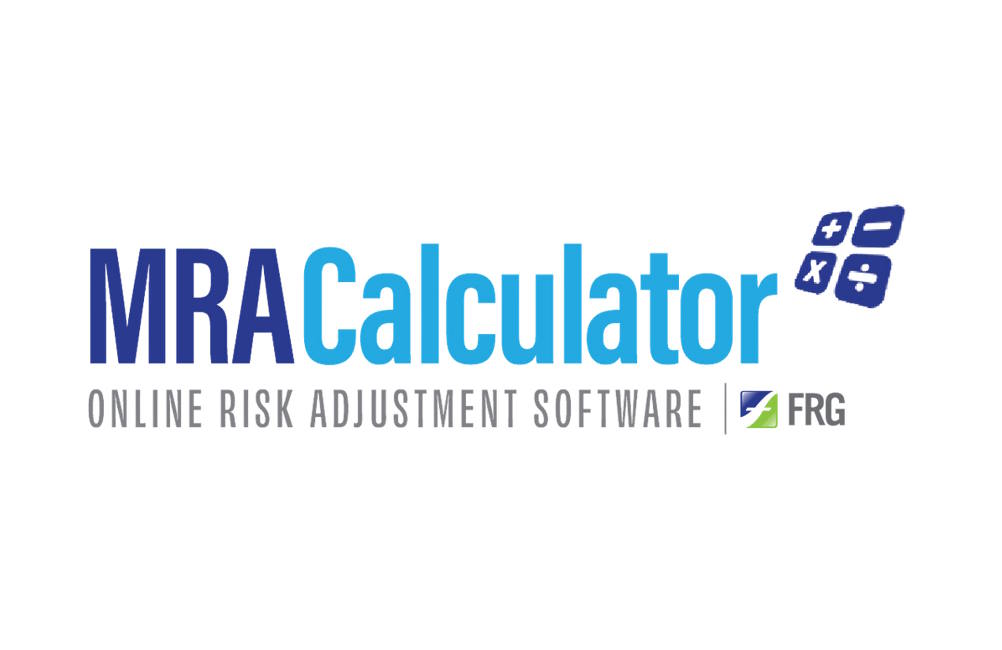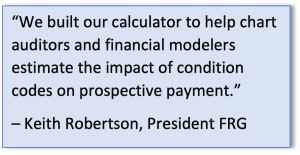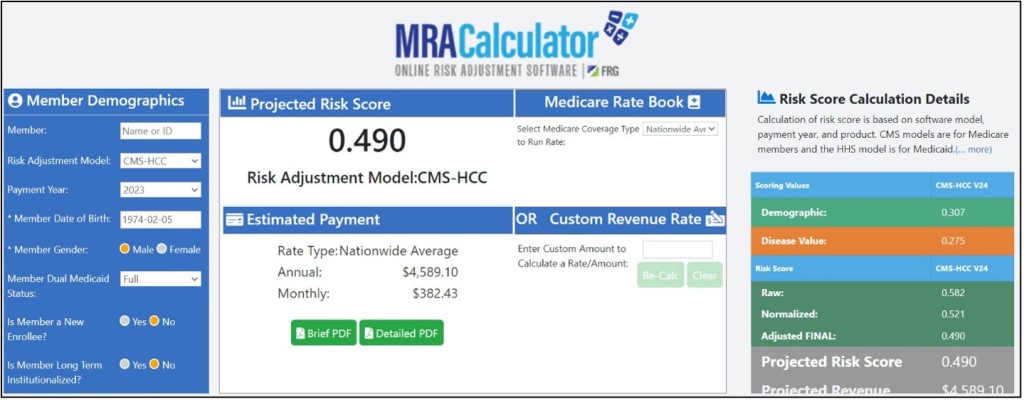5 Ways FRG’s new MRA Calculator Helps Coders!

As explained in a previous article, Medicare Risk Adjustment (MRA) requires demographic information and careful validation of patient diagnosis codes, dates of service and clinical documentation to align revenue to expected cost in Medicare Advantage.
As of January 2023 more than 29.1 million people were enrolled in a Medicare Advantage plan, a more than one million member increase from 2022 and a total which accounts for approximately 45% of Medicare’s 64.5 million beneficiaries (https://www.cnbc.com/2023/01/30/medicare-beneficiaries-in-advantage-plans-can-change-2023-coverage.html).
In addition to representing a large population, Medicare Advantage spending accounts for more than half of overall Medicare spending. According to the Kaiser Family Foundation, Medicare Advantage spending accounted for $427 billion (or 55%) of total Medicare spending as of 2022.
In fact, Medicare Advantage enrollment and spending have been steadily increasing over the last decade. The trend has driven health plans and risk bearing provider organizations to focus carefully on ensuring that the revenue available through risk adjustment programs is sufficient to cover the cost of providing care to their populations.
However, the link between condition capture and revenue alignment is complex. Fortunately, FRG has created an online tool for coders and analysts which aids them during the process of coding reviews to help them quantify the revenue impact of documentation efforts. This article provides an overview of FRG’s MRA Calculator and five of the most helpful features of the online tool.
Introducing the MRA Calculator
The MRA Calculator is the culmination of years of testing by our team of experts in medical coding, healthcare finance and data modeling.
FRG has earned a reputation for its laser focus on reconciling the financials of value-based agreements and presenting information online in interactive reports to help health plans and risk-bearing provider groups understand financial performance trends and drivers. We took the same kind of discipline into the creation of our MRA Calculator so that teams needing to understand the revenue implications of their coding and chart audit projects could have a reliable and trustworthy resource.
The MRA Calculator is a tool made specifically for coders and analysts. Users enter or search for diagnosis codes, and the calculator presents the corresponding condition code according to the hierarchy, compiles the projected risk scores factoring in demographics, and estimates the resulting medical monthly and annual premium.
The tool’s development team also integrated coding tips and remarks from CMS to improve each user’s experience, further setting this calculator apart from other online risk adjustment tools.
Top 5 Reasons to Use FRG’s MRA Calculator
Interactive
MRA Calculator allows users to search for diagnosis codes by diagnosis description or partial diagnosis based on clinical observations. The weights and other rules associated with each diagnosis code are continually maintained according to CMS-HCC updates.
To ensure coding accuracy, FRG’s MRA Calculator also provides in-depth notes about diagnosis references and which codes need to be dropped according to updates maintained by the American Hospital Association (AHA).
When a code is outranked by another, the MRA Calculator notes this change and indicates which code applies to help eliminate confusion about the impact of redundant diagnoses.
Easy to Use
One of the most appealing aspects of the MRA Calculator is how easy the tool is to use. First, enter a member name for the print-out or leave it blank. Second, enter the demographic data: age, sex and the county where the member is enrolled. Third, enter the health status variables: dual or non-dual; new enrollment or institutionalized.
Finally, search and add diagnosis codes to the profile. The user-friendly and intuitive layout of the MRA Calculator interface helps users quickly understand and quantify risk scores as they work through chart reviews.
Streamlined
The MRA Calculator is specifically created to help busy coders and analysts with the tedious and complex task of calculating risk scores.
Rather than wasting time wading through dozens of tabs, calculating various risk scores to accomplish blending values across multiple models using other tools, MRA Calculator adjusts risk scores as users input data, affording them extra time to evaluate what the risk adjustment profile is for their patients.
Confidential
The MRA Calculator is designed for interactive, ad hoc use. This means that the tool doesn’t store any data after users close their browsers. Users can audit charts privately, save their results as a PDF if desired.
Affordable
The MRA Calculator is free to try for 30 days! The trial period affords users to plenty of time to see for themselves the effectiveness of the MRA Calculator risk free. After the free trial ends, the MRA Calculator only costs users $50 per month to keep. Teams of five or more receive a 20% discount with the group rate.
Conclusion
In short, the MRA Calculator ensures coding accuracy and improved productivity (on an individual or team basis). Additionally, the tool is easy to use, affordable, and confidential. It was built with coders and financial analysts in mind.
To learn more about MRA Calculator , click here.
For those who need to evaluate multiple cases, or need long term revenue audit services, contact FRG! We have developed a new Revenue Audit and Monitoring Program (RAMP) that can help organizations understand the effectiveness of their risk adjustment teams and highlight opportunities for properly aligning revenue to match the acuity of your patient population.

